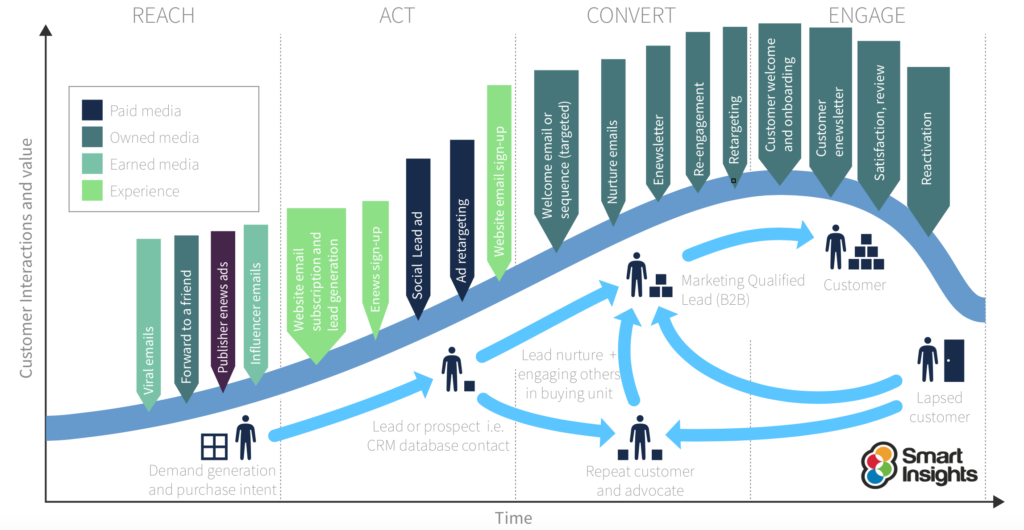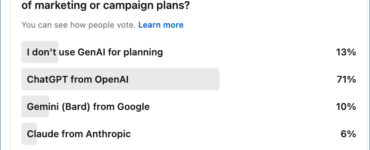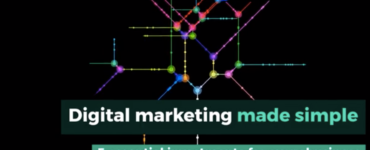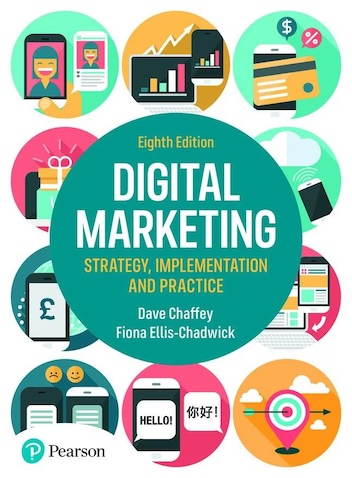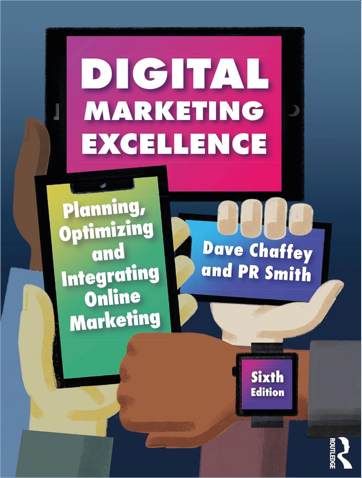Exploring different types of email marketing
In my book Total Email Marketing published in 2004 and 2008 I break out opportunities for email marketing into customer acquisition and retention. This breakdown still makes sense today. Although many commentators have forecast the death of email marketing with the advent of social media, in fact, it is still thriving and is used to engage social network users.
Different types of emails
Today, it’s best to consider the opportunities for email marketing across the customer lifecycle as shown in this visual.
Common email types to consider incorporating into your email contact strategy are:
- Welcome messages used for activation or nurture
- Newsletter
- Promotional campaign
- Re-engagement or reactivation
- Seasonal/Special Events (Black Friday/Cyber Monday)
- Abandoned cart
These email types fit best in the context of the customer lifecycle as shown in this visual. All of the owned media shown in this visual are different forms of email which can be supported through email automation
Success factors for email marketing are summarized by the CRTICAL factors I used in the introduction to the book. CRITICAL stands for:
- Conversation – Email works best for marketing today when it can prompt a dialogue and encourage social sharing.
- Relevance (including targeting) – Does the offer and creative of the e-mail meet the needs of the recipients? Is a single message sent to all prospects or customers on the list or are e-mails with tailored creative, incentive and copy sent to the different segments on the list? Do recipients think the e-mail is SPAM? Will it get trapped in the Spam filters?
- Incentive (or offer) – The WIFM factor or ‘Whats in it for me?’ for the recipient. What benefits does the recipient gain from clicking on the hyperlink(s) in the e-mail?
- Timing – Timing refers to when the e-mail is received; the time of day, day of the week, point in the month and even the year; how does it relate to events or other campaign elements.
- Integration – Are the e-mail campaigns part of your integrated marketing communications? Questions to ask include: are the creative and copy consistent with my brand? Do the message reinforce other communications? Does the timing of the e-mail campaign fit with offline communications?
- Creative and Copy– This is part of the creative and refers to the structure, style and explanation of the offer together with the number of location of hyperlinks and other calls-to-action in the e-mail.
- Attributes (of the e-mail) – The message headers such as the Subject line, From address and format (HTML or text) have all been written about at length
- Landing page (or microsite) – The page(s) reached after the recipient clicks on a link in the e-mail. Typically, on clickthrough, often the recipient will be presented with a direct response form to profile or learn more about them. Designing the page so the form
Beyond these tactics, taking it up a level, strategic success factors or key email management activities are:
- Defining an email automation plan or contact strategy to set up and optimize automated welcome, nurture and reactivation emails and to incorporate personalized elements into newsletters
- Deciding on your segmentation and targeting approach. Smart Insights research shows that the majority of businesses are sending out the same email to everyone on their list, i.e. not using the features of the email systems they are paying for!
- Defining KPIs to optimize your email beyond the open and click response metrics for individual campaigns, i.e. for longer-term list engagement rates and hurdle rates
- Structured optimization activities including deliverability
